What is the solution to reduce the gap in high school exam results between these two regions, especially when assessing learners' capacity according to the 2018 General Education Program?
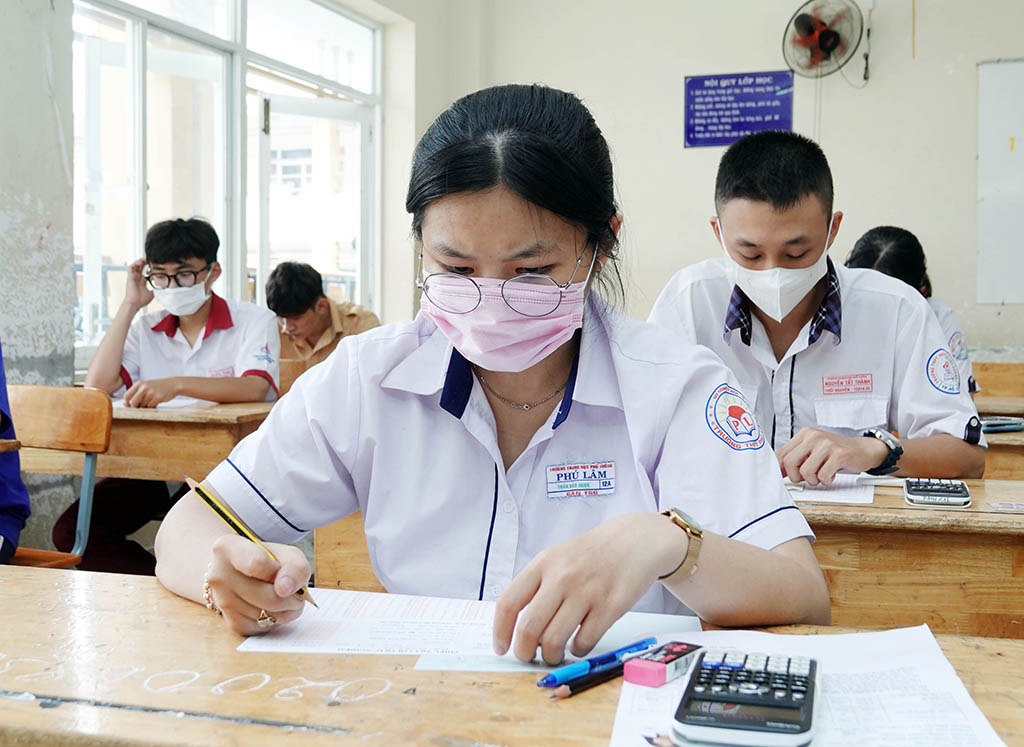
Candidates take the math test for the 2023 high school graduation exam. This subject has a large difference between regions and increases over the years.
K REGIONAL EDUCATION GAP IS Narrowing
Over the past decades, the Government, education sector and society have had many solutions to support education in disadvantaged areas, mountainous areas, rural areas, ethnic minority areas...; thanks to that, the educational gap between advantaged and disadvantaged areas has been increasingly reduced.
This is shown through the reduction of priority points in university admissions in each period, which is agreed by society. Before 2003, students were given the highest bonus of 3.0 points, in the period 2004 - 2017, the highest bonus was 1.5 points, since 2018, the highest bonus is only 0.75 points.
According to the Ministry of Education and Training, the priority points in admissions are due to differences in learning conditions between regions/areas. Mountainous, island, and rural areas still have many difficulties in terms of schools, teachers, learning environment, and low quality of high school entrance... In particular, there is a shortage of teachers when implementing the 2018 General Education Program and digital transformation in education is still limited in economically and socially disadvantaged areas.
AVERAGE SCORES OF 9 SUBJECTS DIFFER BY LESS THAN 1 POINT
Based on the graduation exam scores announced by the Ministry of Education and Training, we have compiled and calculated the average scores of 9 subjects of the 10 highest and 10 lowest localities in the last 3 consecutive years, showing that the difference in scores between these 2 groups of localities is always less than 1 point.
Specifically, in 2021 (the average score of 9 subjects in the 10 highest localities was 6.823 points; the score of the 10 lowest localities was 6.003 points; the difference between the 2 groups of localities was 0.820 points). Similarly calculated, in 2022 (6.859; 5.946; 0.913) and 2023 (6.959; 6.046; 0.913). Thus, if calculating the average score of 9 subjects, the difference between the 10 highest localities and the 10 lowest localities is less than 1.0 point, which is acceptable.
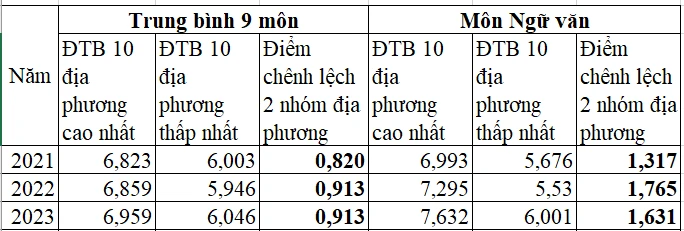
LITERATURE, MATH AND FOREIGN LANGUAGE SCORES DIFFER FROM 1.5 TO ALMOST 2 POINTS
However, for the three compulsory subjects of literature, math and foreign language, the difference in scores between the 10 highest and 10 lowest localities is 1.5 points for literature and nearly 2.0 points for foreign language.
With the above calculation, for literature, in 2021 (6.993; 5.676; 1.317), in 2022 (7.295; 5.530; 1.765), in 2023 (7.632; 6.001; 1.631). The difference in literature between the two local groups is over 1.5 points.
The difference in math is larger and increases over the years. Specifically, in 2021 (7.075; 5.521; 1.554), 2022 (7.012; 5.422; 1.590), 2023 (6.805; 5.120; 1.685). The difference between the 10 highest and 10 lowest localities for math is over 1.6 points.
For foreign languages, the difference in scores between the two local groups is very large. Specifically, in 2021 (6.579; 4.590; 1.989), in 2022 (5.800; 4.117; 1.683), in 2023 (6.148; 4.257; 1.891). Thus, the difference in scores between the two local groups in foreign languages is nearly 2.0 points.
The 2018 general education program is oriented towards developing students' capacity and qualities. And the graduation exam after 2025 will be assessed according to the requirements for capacity and qualities specified in the 2018 general education program. This leads to a high risk of regional disparities if there is no effective solution, because the teaching and learning conditions and input quality of schools in mountainous and disadvantaged areas are always lower than those in favorable areas.
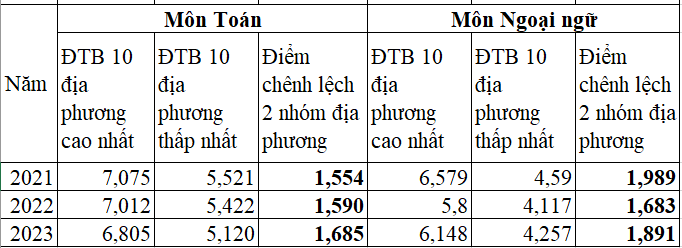
SOLUTIONS TO REDUCE REGIONAL GAP
The high school graduation exam from 2025 according to the 2+2 plan (2 compulsory subjects are math and literature, two elective subjects according to career trends) is considered a method of exam that reduces exam pressure and balances the proportion of students choosing subjects in social sciences (KHXH) and natural sciences (KHTN). In particular, foreign languages are elective subjects that will reduce pressure on disadvantaged localities.
Looking at the statistics table of foreign language scores in 2021, 2022 and 2023, it shows that cities and provinces with highly developed socio-economy are always at the top; while the northern mountainous provinces, the Central Highlands and the Mekong Delta - where there are many ethnic minority students - are always at the bottom.
To reduce the regional quality gap through the high school graduation exam, the Ministry of Education and Training first needs to survey, evaluate, and summarize the implementation of the 2018 General Education Program in each region, area, and locality; provide training on test-making methods and student assessment in the direction of capacity development, focusing on training and special support for teachers in disadvantaged areas. At the same time, test sets of test questions should be tested in all regions, then compare results between regions and localities. The test-making process also needs to ensure fairness between subjects, avoiding the situation of easy subjects and difficult subjects.
Next, localities and high schools need to survey students' wishes for choosing graduation exam subjects, and strengthen career guidance activities so that students can choose exam subjects that both ensure passing graduation and are suitable for their career trends.

To ensure the capacity for assessment, test questions should be designed in the direction of assessing the teachers' capacity, and to enhance the application of knowledge to solve practical problems. Pedagogical universities in each region need to coordinate with the localities where the schools are located, so that lecturers and high school teachers can jointly develop test questions in a new format, thereby drawing experience to teach pedagogical students about testing, assessment and methods of assessing capacity.
On the student side, parents need to change their perspective, study to develop their qualities and abilities, exams are only to evaluate a stage of study, learning is a lifelong process.
Finding the reason for Vietnam's PISA assessment results falling
Recently, the 2022 PISA results assessing the capacity of 15-year-old students in more than 73 countries and territories belonging to the Organization for Economic Cooperation and Development (OECD) and outside the OECD showed that the results of Vietnamese students dropped significantly compared to 2018.
In 2018, Vietnam ranked 24/79 (countries) in math, 13/79 in reading comprehension and 4/79 in science, above the average of OECD countries. Meanwhile, in 2022, Vietnam ranked 31/73 in math, 34/73 in reading comprehension and 34/73 in science, below the average of OECD countries. In particular, the ranking in science dropped sharply, from 4th in 2018 to 34th in 2022.
One thing that is very clear is that the rate of students choosing the social science group in the high school graduation exam is increasing. In 2021, this rate was 64.72%; in 2022, it was 66.96% and in 2023, it was 67.64%. Especially in mountainous provinces and disadvantaged areas, this rate is very high, with some provinces having over 80%. This trend shows that students choose the social science group to make it easier to study and graduate, not to choose according to career trends.
This trend leads to the majority of Vietnamese students choosing to study social sciences and humanities from grade 10, especially in the provinces. Even in Ho Chi Minh City or Hanoi, lower-ranked schools, students also choose to study social sciences more. This causes the scientific capacity of Vietnamese students to decrease in general compared to many countries in the world. The increase in students choosing to study social sciences also affects the rate of Vietnamese students choosing STEM majors (science, technology, engineering and mathematics) lower than many countries in the region and the world. According to data released by the Ministry of Education and Training on December 6, 2023, this rate in 2021 in Vietnam is 28%, while in Singapore it is 46%, Malaysia is 50%, South Korea is 35%, Finland is 36% and Germany is 39%.
In Vietnam, STEM students in the Southeast region account for 58.2% of the total number of students in the region, the Red River Delta accounts for 50.2%, the Mekong Delta about 15%, the northern mountainous region 10% and the Central Highlands, the lowest, only accounts for 2%.
Source link









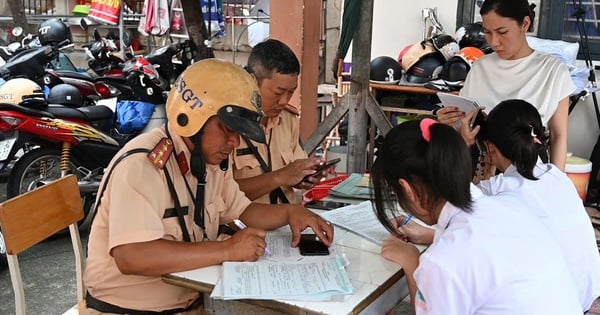

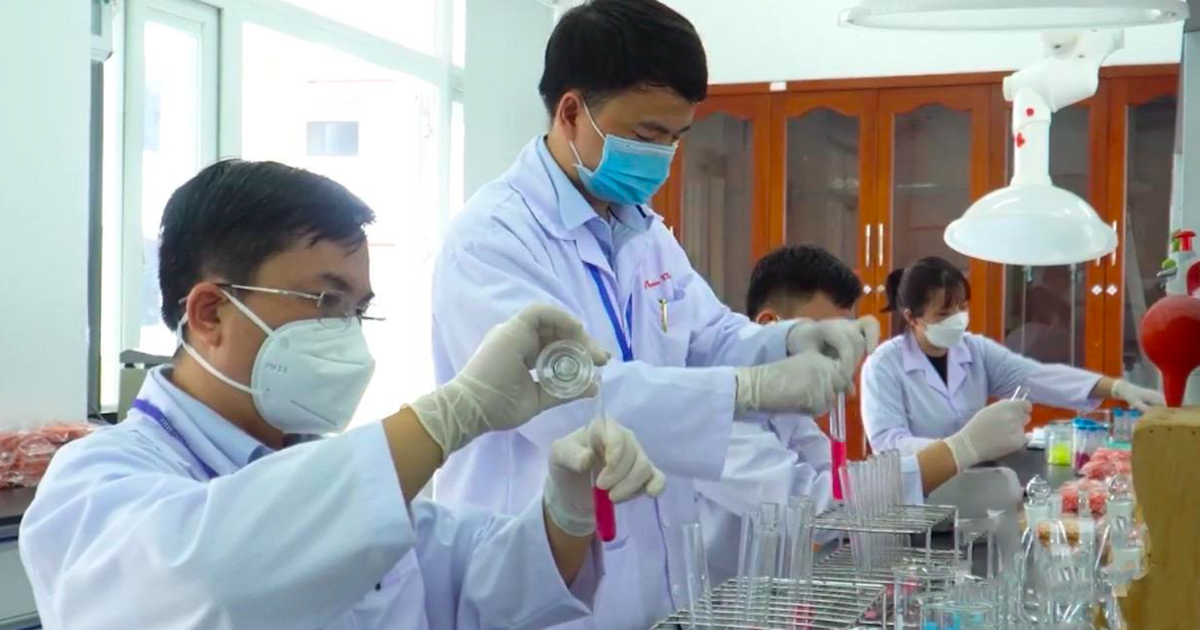



























![[Photo] Prime Minister Pham Minh Chinh chairs Government Conference with localities on economic growth](https://vstatic.vietnam.vn/vietnam/resource/IMAGE/2025/2/21/f34583484f2643a2a2b72168a0d64baa)






























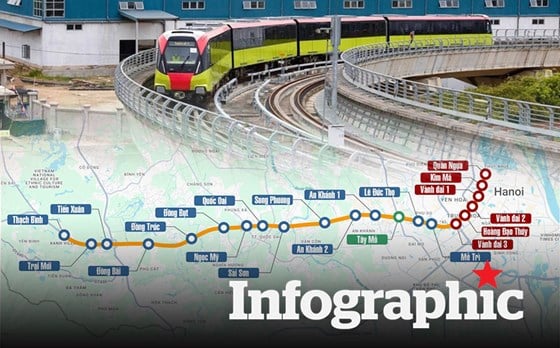

























Comment (0)